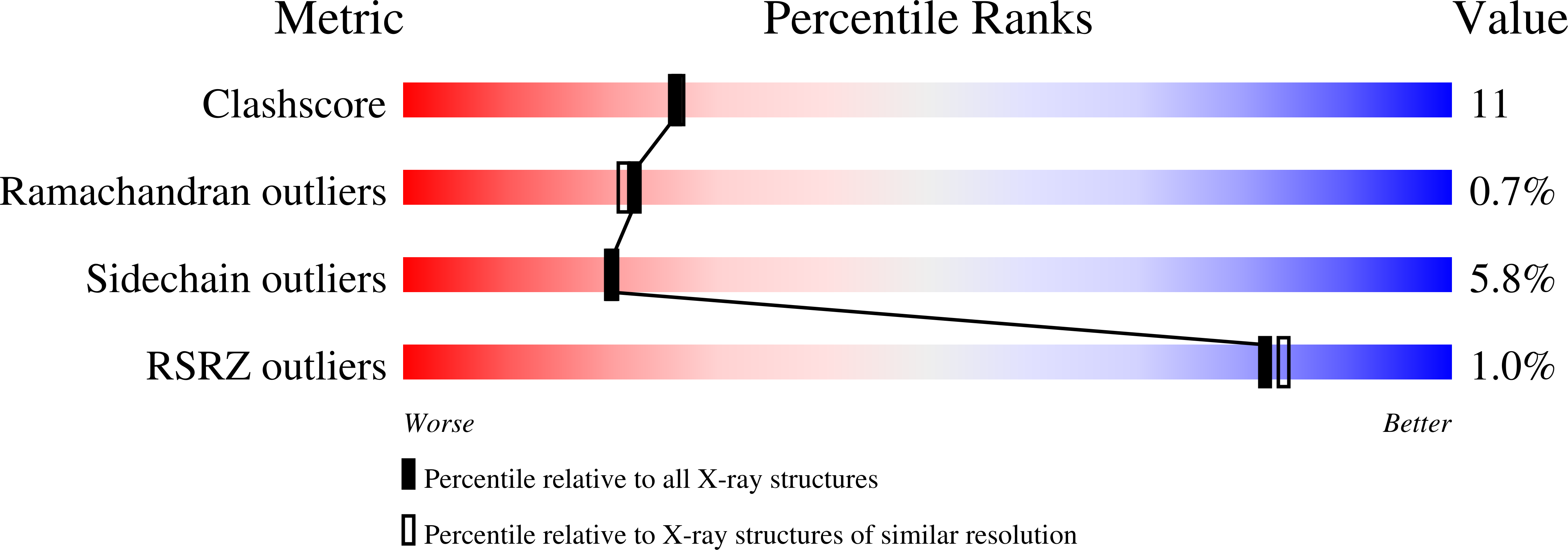Bacillus thuringiensis CryIA(a) insecticidal toxin: crystal structure and channel formation.
Grochulski, P., Masson, L., Borisova, S., Pusztai-Carey, M., Schwartz, J.L., Brousseau, R., Cygler, M.(1995) J Mol Biol 254: 447-464
- PubMed: 7490762
- DOI: https://doi.org/10.1006/jmbi.1995.0630
- Primary Citation of Related Structures:
1CIY - PubMed Abstract:
The activated 65 kDa lepidopteran-specific CryIA(a) toxin from the commercially most important strain Bacillus thuringiensis var. kurstaki HD-1 has been investigated by X-ray diffraction and for its ability to form channels in planar lipid bilayers. Its three-dimensional structure has been determined by a multiple isomorphous replacement method and refined at 2.25 A resolution to an R-factor of 0.168 for data with I > 2 delta (I). The toxin is made of three distinct domains. The N-terminal domain is a bundle of eight alpha-helices with the central, relatively hydrophobic helix surrounded by amphipathic helices. The middle and C-terminal domains contain mostly beta-sheets. Comparison with the structure of CryIIIA, a coleopteran-specific toxin, shows that although the fold of these two proteins is similar, there are significant structural differences within domain II. This finding supports the conclusions from genetic studies that domain II is involved in recognition and binding to cell surface receptors. The distribution of electrostatic potential on the surface of the molecule is non-uniform and identifies one side of the alpha-helical domain as negatively charged. The predominance of arginine residues as basic residues ensures that the observed positive charge distribution is also maintained in the highly alkaline environment found in the lepidopteran midgut. Structurally important salt bridges that are conserved across Cry sequences were identified and their possible role in toxin action was postulated. In planar lipid bilayers, CryIA(a) forms cation-selective channels, whose conductance is significantly smaller than that reported for CryIIIA but similar to those of other Cry toxins.
Organizational Affiliation:
Biotechnology Research Institute, National Research Council of Canada, Québec, Canada.














